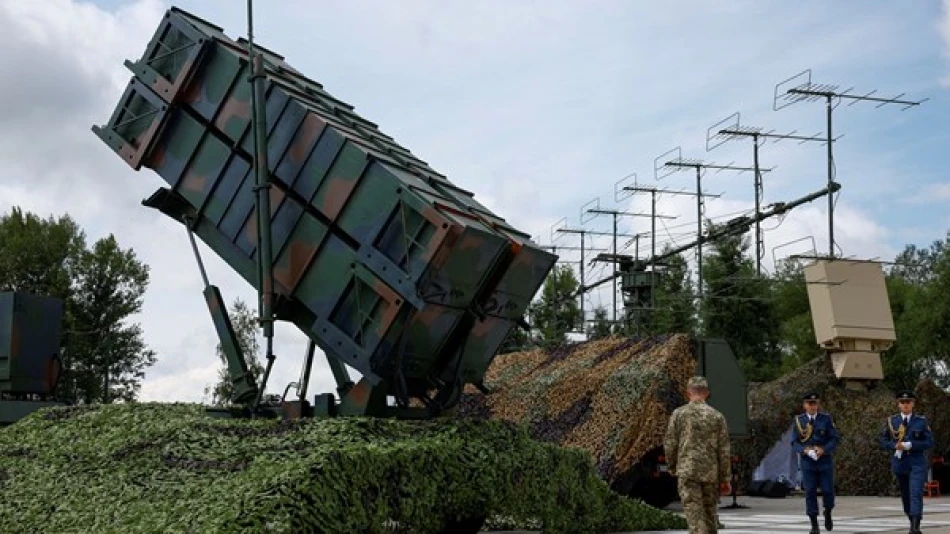
US Accelerates Military Aid to Ukraine, Diplomat Reveals
Trump's NATO Gambit: Europe to Buy American Weapons for Ukraine in Strategic Policy Shift
The United States is rapidly implementing a new arms delivery strategy for Ukraine that shifts the financial burden to European allies while maintaining American weapons manufacturing dominance. Under President Donald Trump's latest NATO agreement, European nations will purchase advanced U.S. military systems—particularly Patriot air defense batteries—and transfer them directly to Kyiv, marking a significant pivot in Washington's approach to the conflict.
A Transactional Approach to Alliance Defense
U.S. Ambassador to NATO Matthew Whitaker confirmed Thursday that the administration is moving swiftly to execute Trump's plan, announced earlier this week following discussions with NATO Secretary-General Mark Rutte. The arrangement represents classic Trump dealmaking: America provides the weapons technology and manufacturing capacity, while Europe foots the bill for Ukraine's defense needs.
"We're all moving quickly to facilitate this and get it done," Whitaker stated, though he declined to provide specific timelines for implementation.
European Buyers Line Up
Several European nations have already expressed willingness to participate in the weapons purchasing scheme, including Germany, Norway, Netherlands, Denmark, and Sweden. This broad coalition suggests the plan addresses long-standing European concerns about burden-sharing within NATO while satisfying Trump's demands for allies to increase their defense spending.
The Patriot System Focus
The emphasis on Patriot air defense systems reflects Ukraine's urgent need for protection against Russian missile and drone attacks targeting civilian infrastructure. These advanced systems, manufactured by Raytheon, represent some of America's most sophisticated air defense technology and typically cost hundreds of millions of dollars per battery.
General Alexus Grynkewich, commander of NATO forces in Europe, indicated that preparations for the first Patriot shipment are already underway, signaling the plan's rapid progression from concept to execution.
Strategic Implications for U.S. Defense Industry
This arrangement creates a win-win scenario for American defense contractors and the broader U.S. economy. European nations purchasing American weapons systems generates significant revenue for companies like Raytheon while maintaining U.S. technological superiority and industrial capacity. The model could potentially extend beyond Ukraine to other defense partnerships.
However, questions remain about sourcing and timing. Whitaker acknowledged ongoing discussions about whether the U.S. would sell Patriot missiles from existing military stockpiles, emphasizing that America would not compromise its own strategic position.
Inventory Management and Alternatives
The administration is exploring multiple options to expedite delivery while protecting U.S. readiness. One proposal involves European nations immediately transferring their existing Patriot systems to Ukraine, then purchasing replacements from the United States. This approach would address Ukraine's immediate battlefield needs while maintaining long-term alliance capabilities.
This inventory rotation strategy mirrors successful models used in previous conflicts, where allies provided immediate assistance while rebuilding their arsenals through American procurement.
Broader NATO Transformation
The weapons purchasing plan represents more than just Ukraine support—it signals a fundamental shift in how NATO operates under Trump's leadership. By making European allies direct purchasers rather than recipients of American military aid, the arrangement addresses domestic political concerns about foreign spending while strengthening transatlantic defense ties.
This model could reshape future alliance burden-sharing arrangements, potentially extending to other regions where American allies seek advanced weapons systems. The success of this Ukraine-focused initiative may determine whether similar transactional approaches become standard NATO practice.
Most Viewed News

 Layla Al Mansoori
Layla Al Mansoori






